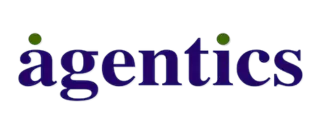
How Does RAG Work? Understanding Its Mechanics and Applications
GeneralOverview
Retrieval-Augmented Generation (RAG) revolutionises the landscape of AI by seamlessly integrating data retrieval processes with large language models (LLMs). This innovative approach significantly enhances the accuracy and relevance of AI-generated outputs. Traditional generative models often fall short in providing contextually rich responses, leaving a gap that RAG effectively addresses.
Through a multi-step process, RAG:
- Retrieves data from external sources,
- Augments this information into the model’s prompt, and
- Subsequently generates responses that are not only contextually relevant but also rich in detail.
By leveraging RAG, organisations can overcome the inherent limitations of conventional models, ensuring that their AI solutions are both impactful and reliable. Embrace the future of AI with RAG and unlock the potential for more precise and meaningful interactions.
Introduction
Retrieval-Augmented Generation (RAG) is revolutionising the landscape of artificial intelligence by merging data retrieval with generative capabilities. This powerful combination allows large language models to produce outputs that are not only coherent but also grounded in real-time information.
By enabling AI systems to access external data sources, RAG significantly enhances accuracy and contextual relevance across various applications—from customer support to medical diagnosis.
However, as organisations increasingly embrace RAG, a critical question arises: how does RAG work to ensure that the information it generates remains reliable and up-to-date?
Exploring this intricacy reveals not only the mechanics behind RAG but also the profound impact of data currency on its effectiveness. Understanding these elements is essential for leveraging RAG’s full potential in driving informed decision-making and innovation.
Define Retrieval-Augmented Generation (RAG)
Retrieval-Augmented Generation (RAG) stands as a groundbreaking AI framework that significantly amplifies the capabilities of large language models (LLMs), illustrating how does RAG work by seamlessly integrating data retrieval processes into the generation workflow. This innovative technique empowers models to access and incorporate external data sources—such as databases and knowledge bases—resulting in outputs that are not only more accurate but also contextually relevant.
By synthesising the strengths of traditional data retrieval frameworks with generative AI, RAG enhances LLM performance, which raises the question of how does RAG work to enable them to deliver responses that are coherent and anchored in real-time data. This dual approach not only boosts the reliability of AI-generated content but also elevates its relevance across various applications, from customer service to content creation.
Embrace the transformative potential of RAG and unlock new possibilities in AI-driven solutions.
Explain How RAG Works Mechanically
To comprehend how does RAG work, one must recognise that RAG operates through a multi-step process that encompasses both retrieval and generation phases, effectively addressing the complexities of information processing. This workflow typically unfolds in the following manner:
- The process initiates when a user submits a query or prompt to the RAG platform to understand how does RAG work.
- Data Retrieval: The system conducts a thorough search in an external knowledge base or database, pinpointing relevant details that inform the response. Advanced search algorithms are employed to guarantee accuracy and relevance in this critical step.
- Data Augmentation: The pertinent details retrieved are seamlessly integrated into the prompt, enriching the context available to the language model.
- Response Generation: Ultimately, the LLM generates a reply based on the enhanced prompt, producing an output that is informed by both its extensive training material and the newly acquired details.
This mechanical synergy of retrieval and generation illustrates how does RAG work to produce outputs that are not only contextually rich but also factually sound. It effectively mitigates the limitations inherent in traditional generative models, which rely solely on pre-existing training information. Embrace RAG’s innovative approach to unlock the full potential of AI solutions.
Explore Real-World Applications of RAG
RAG presents a multitude of applications across diverse industries, underscoring its remarkable versatility and effectiveness. Consider the following notable examples:
- Customer Support: By harnessing RAG, chatbots can provide precise and prompt responses to customer inquiries, effectively retrieving pertinent details from knowledge bases.
- Content Creation: Writers and marketers can leverage RAG to create articles or marketing materials that are informed by the latest information and trends, ensuring both relevance and precision.
- Medical Diagnosis: In the healthcare sector, RAG assists professionals by retrieving current medical data and guidelines, facilitating accurate diagnoses and treatment recommendations.
- Legal Research: Lawyers can utilise RAG to swiftly access relevant case law and legal precedents, streamlining the research process and enhancing case preparation.
- Sales Enablement: Sales teams can employ RAG to obtain real-time information about products, competitors, and market trends, thereby improving their ability to engage clients effectively.
These applications demonstrate how RAG works in transforming traditional processes, significantly enhancing efficiency and responsiveness to real-time data.
Highlight the Importance of Source Currency in RAG
The effectiveness of RAG is significantly determined by how RAG works with the currency of its data sources. Relying on outdated or irrelevant data can lead to flawed outputs, undermining the reliability of the framework. Thus, it is imperative to:
- Consistently Refresh Data Sources: Regularly update the knowledge bases and databases integrated into the RAG framework to ensure they reflect the latest data.
- Implement Real-Time Data Retrieval: Employ mechanisms that facilitate access to real-time data, enabling RAG to deliver responses that are both accurate and timely.
- Monitor Source Reliability: Assess the credibility of the sources utilised to guarantee that the information retrieved is trustworthy and pertinent.
By prioritising source currency, organisations can significantly enhance the performance of their RAG systems, raising the question of how RAG works, which leads to improved decision-making and enriched customer interactions.
Conclusion
Retrieval-Augmented Generation (RAG) signifies a pivotal leap in artificial intelligence, seamlessly integrating data retrieval with generative capabilities to elevate the performance of large language models. This groundbreaking framework empowers AI to access real-time data while ensuring that the generated outputs are both relevant and contextually rich, effectively overcoming the limitations of traditional models.
The mechanics of RAG unfold through a systematic process where user queries are met with comprehensive data retrieval, data augmentation, and response generation. Each phase is meticulously designed to guarantee that the information provided is accurate and timely, thereby enhancing the user experience across diverse applications. From customer support to medical diagnosis, the adaptability of RAG illustrates its potential to transform industry operations by streamlining workflows and bolstering decision-making.
As the significance of source currency becomes increasingly evident, it is clear that the efficacy of RAG relies heavily on the quality and timeliness of its data sources. Organisations must prioritise the regular updating of their knowledge bases and establish mechanisms for real-time data retrieval to fully harness this powerful framework. By doing so, they can unlock the full potential of RAG, paving the way for more informed interactions and improved outcomes in an ever-evolving data-driven landscape.
Frequently Asked Questions
What is Retrieval-Augmented Generation (RAG)?
Retrieval-Augmented Generation (RAG) is an innovative AI framework that enhances the capabilities of large language models (LLMs) by integrating data retrieval processes into the generation workflow.
How does RAG improve the performance of language models?
RAG improves the performance of language models by allowing them to access and incorporate external data sources, such as databases and knowledge bases, resulting in outputs that are more accurate and contextually relevant.
What are the benefits of using RAG in AI-generated content?
The benefits of using RAG include increased reliability and relevance of AI-generated content, making it suitable for various applications, including customer service and content creation.
What types of external data sources can RAG utilise?
RAG can utilise various external data sources, including databases and knowledge bases, to enhance the information used in generating responses.
In what applications can RAG be effectively used?
RAG can be effectively used in applications such as customer service and content creation, where accurate and contextually relevant responses are essential.
Enjoyed this post? Share it with your network!
10 Best AI Sales Tools to Boost Your Team’s Performance

Discover the top 10 best AI sales tools to enhance team performance and drive revenue growth.
Mastering Test Call Numbers: A Step-by-Step Guide for Sales Directors

Elevate your communication with our guide on mastering test call numbers for sales success.
7 Ways Automated Outbound Calls Boost Sales Performance

Discover how automated outbound calls enhance sales performance and streamline communication.
